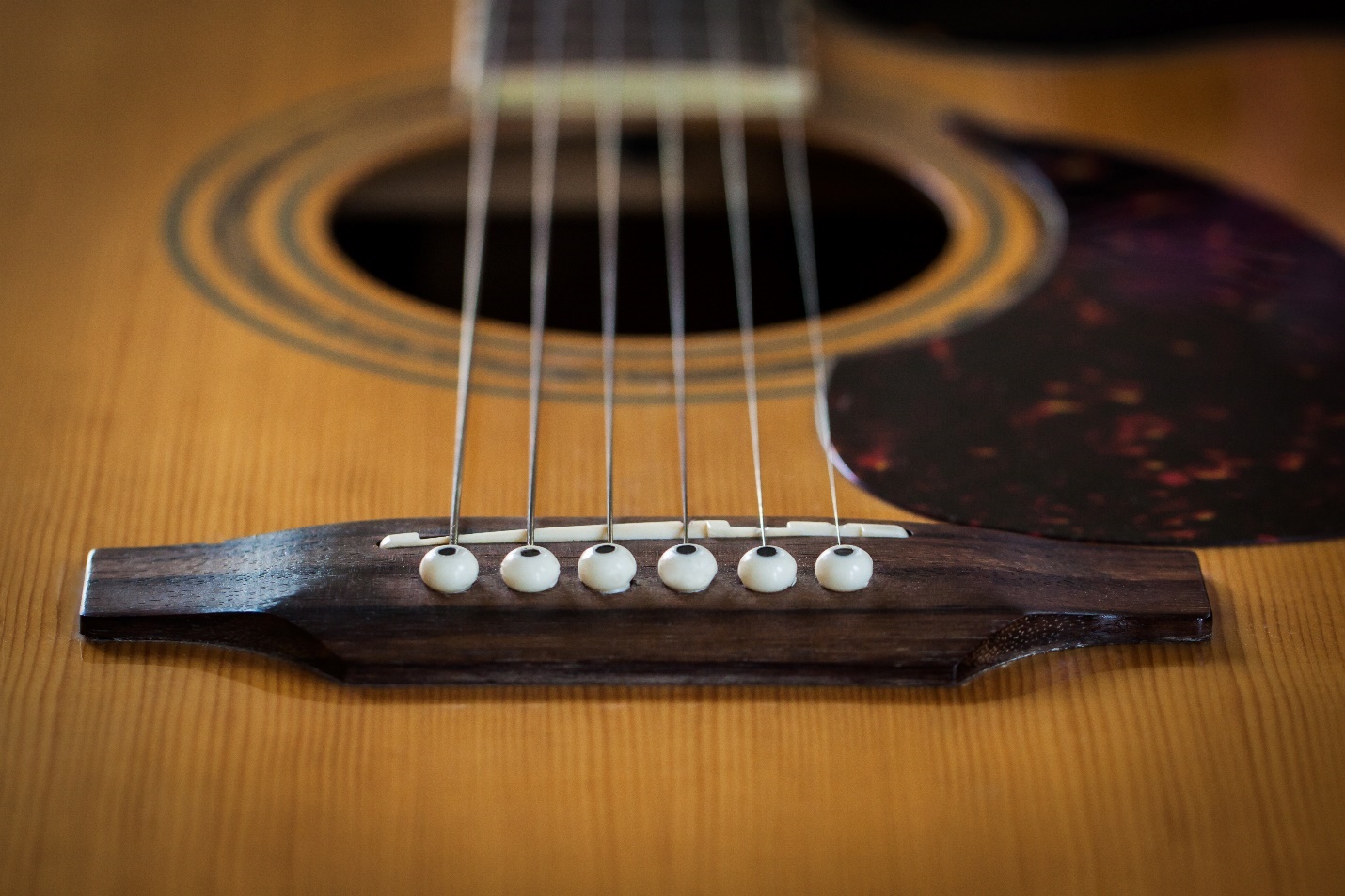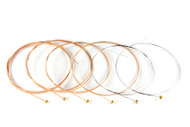Acoustic Guitar String Gauges Guide
Jul 14th 2023
So many guitar strings, so little time. When you take into account all of the brands, materials and sizes for guitar strings, the number can seem infinite, and the effect can be mind-boggling. And as a musician, all you want to do is play some good tunes. What is a guitarist to do? Strings and Beyond is here to help shed some light on what to look for when shopping for acoustic guitar strings.
One of several key factors you will have to take into account when you shop for guitar strings is the gauge. Selecting the right gauge for acoustic guitars is particularly important because, unlike electric guitars, acoustics do not have the assistance of an amp or pickup to help project the sound out to your audience. So if you play an acoustic guitar, you should choose your string gauges with particular care. We have created this simple acoustic guitar string gauges guide so you will have the basic knowledge to make an informed purchase.

String Gauge Defined
What does guitar string gauge mean, anyway? As you might suspect from the word itself, "gauge" simply refers to size. The term has been used to signify the measurement of everything from railroad tracks to steam pressure, but in this instance, it refers to the thickness of your guitar strings.
As in many other fields, guitar string gauge has been standardized so you can make easy comparisons. For guitar strings, gauge is measured in thousandths of an inch. The higher the number, the thicker the string. Thus, you will see gauges like .010, meaning 10 thousandths of an inch, or .046, meaning 46 thousandths of an inch.
When guitar strings are sold in sets of differing gauges, the sets are typically identified by the thinnest string in the set. Thus a package of strings with an .011 string as the thinnest would be defined as a set of 11s. Packages of guitar strings usually have the sizes listed. If you have a guitar with strings but aren't sure of their size, it's easy to find out. Just buy or borrow a digital caliper tool. Attach the tool to each string, measure it and record the digital readout on a piece of paper. Then you will know where you are starting from with your strings.
You will generally see acoustic guitar string gauges in four main categories: 10 gauge, or extra light; 11s, or light; 12s, classified as medium; and 13s, which are heavy.
String Starters
If you are just starting out with acoustic guitar playing as a beginner, you might want to begin with medium 12s as a good starting point. Acoustic guitars often are sold with these medium strings. After you have learned the basics of acoustic guitar playing with your 12s, you can then easily move up or down to thicker or thinner strings to adjust your playing and sound.

Many guitarists, whether seasoned or beginners, want to experiment with their guitars to see what kinds of sound their instruments can produce. New sets of guitar strings provide one of the most affordable and easiest ways to alter your guitar's sound, since they are generally affordable and easy to change.
Different types of strings will affect your instrument's playability and sound. What will be the effect of moving up to thicker, heavier strings or moving down to thinner, lighter strings? Each choice will offer cons as well as pros. Let's take thinner strings first.
A Look at Thin Strings
Thinner strings are considered easier to play by many. They are softer on your fingers and thus a good choice for beginners who haven't yet developed calluses on their fingers from extensive playing. Skinny strings will also give a thinner, brighter sound with more treble and a subtler effect. Besides being softer on your fingers, lighter strings are easier on your guitar because they require less tension. This can be especially important for older guitars and any other sensitive instrument that can be damaged by too much tension on the neck.
On the downside, lighter strings break more easily than heavier strings. They produce less volume and sustain, or the ability to hold a note. In addition, these strings are more prone to cause fret buzzing.
The Pros and Cons of Thicker Strings
Now on to thicker strings. These bigger strings are generally considered harder to play; you will need stronger hands and fingers to stand up to the increased pressure you will have to put on them to get the sound you are looking for.
On the positive side, they produce more volume and sustain. They don't break as easily as lighter strings either. If you are looking for a deeper tone and more bass in your playing, these strings should be on your radar too. They can be especially good for deeper tones for strumming loud chords.
Your Playing Style
Your style of playing can also influence your choice. Lighter gauges are considered to be easier for fingerpicking. Some say medium gauges sound better for strumming. For fingerpickers, especially beginners with tender digits, heavy gauges can be painful.

Your guitar's size and body type can also play a role in your choices. If you have a jumbo guitar, you might lean to medium or heavy strings. For parlor or three-quarter-size guitars, you might opt for lighter strings like 11s.
Set Up for Success
Keep in mind that changing your strings can often require an adjustment in the setup of your guitar. This is because using thinner or thicker strings can change the distance between the frets and the strings. As mentioned earlier, heavier strings can also put increased tension on your guitar. For instance, it has been estimated that going from extra light to medium strings can produce nearly 40 percent more tension. When you change to a new size of strings, it is always a good idea to have a professional check out your guitar for a setup, especially if you are moving to heavier strings or have an older guitar.
If you have additional questions about acoustic guitar strings, guitar setup and more, you can contact us for friendly assistance from our knowledgeable staff.

